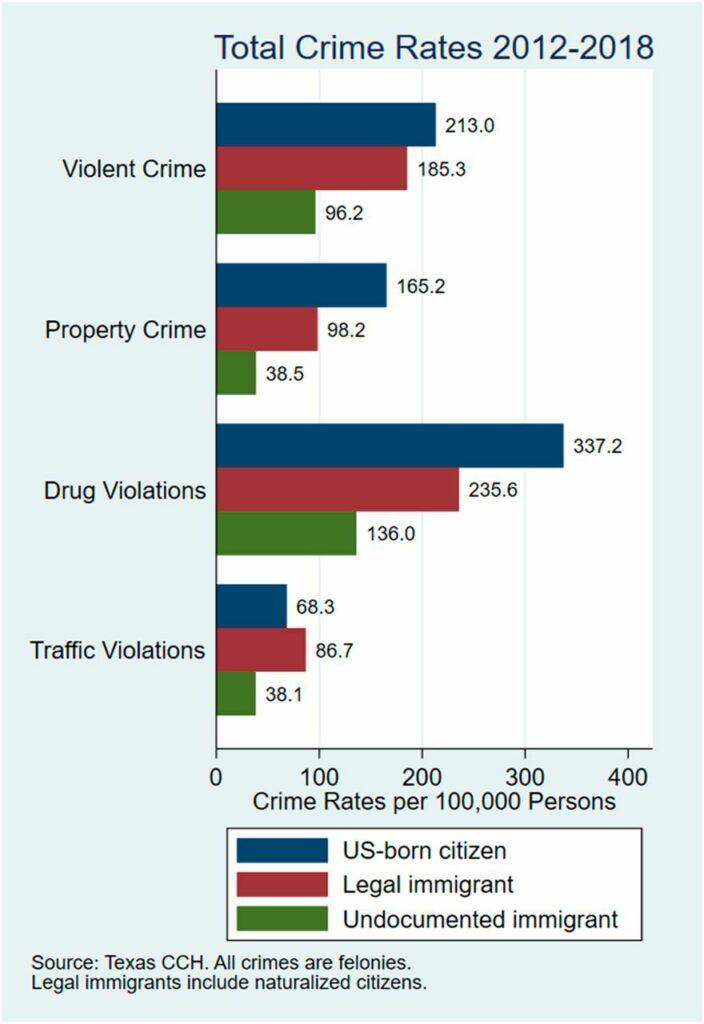A recent analysis by experts challenges a long-standing misconception linking immigration to rising crime rates in the United States. Data consistently shows that immigrants are not responsible for an increase in criminal activity, according to findings highlighted in a report by Northeastern Global News. This evidence comes at a critical time in national debates over immigration policy, underscoring the need to separate facts from fear in discussions about public safety.
Data disproves myths linking immigration to rising crime rates
Extensive research conducted over the past decade consistently shows that immigrant populations in the United States are less likely to commit crimes than native-born citizens. Contrary to popular misconceptions, studies by reputable institutions reveal that areas with higher immigration rates typically experience either stable or decreasing crime rates. Experts note that cultural integration, economic opportunities, and community engagement are significant factors that contribute to these trends, rather than immigration itself being a cause of rising crime.
To put the data into perspective, here is a summary comparing crime rates among immigrant and native-born populations:
| Population Group | Violent Crime Rate (per 100,000) | Property Crime Rate (per 100,000) |
|---|---|---|
| Immigrants | 150 | 450 |
| Native-born Citizens | 230 | 600 |
Additional points highlighted by experts include:
- Immigrants contribute positively to community safety through civic participation and cooperation with law enforcement.
- Economic factors such as employment opportunities play a more direct role in crime fluctuations than immigration status.
- Public perception often exaggerates the link between immigration and crime due to misinformation and selective media coverage.
Expert analysis on the socioeconomic factors influencing public safety
Socioeconomic conditions play a pivotal role in shaping public safety outcomes, often overshadowing simplistic correlations drawn between immigration and crime rates. Research consistently reveals that factors such as poverty, educational attainment, and employment opportunities have more profound impacts on crime trends than demographic shifts. For instance, communities facing long-term economic deprivation often experience elevated crime levels, regardless of immigrant population size.
Key socioeconomic factors influencing public safety include:
- Income inequality: Higher disparities in wealth distribution can aggravate social tensions and increase crime rates.
- Access to education: Schools with limited resources tend to correlate with higher juvenile delinquency.
- Employment opportunities: Areas with sustained job losses or underemployment report elevated crime engagement.
| Factor | Influence on Crime | Notes |
|---|---|---|
| Poverty Rate | High correlation | Economic hardship often breeds desperation |
| Education Level | Moderate correlation | Lower education increases vulnerability to crime |
| Unemployment Rate | Strong correlation | Joblessness can catalyze criminal activities |
Policy recommendations to support immigrant communities and enhance security
To foster safe and thriving communities, policies must be grounded in evidence that debunks myths linking immigration to increased crime. Prioritizing community engagement and trust-building between immigrants and law enforcement is essential. Strategies such as community policing initiatives, culturally responsive training for officers, and accessible legal resources can strengthen cooperation and reduce barriers to reporting crime.
In addition, comprehensive support systems that address socioeconomic challenges faced by immigrant populations are critical. Recommendations include:
- Expanding access to affordable housing and healthcare to alleviate vulnerabilities that can be exploited by criminal elements.
- Enhancing educational and employment opportunities to improve social integration and economic stability.
- Protecting immigrant workers’ rights to reduce exploitation and associated risks.
| Policy Area | Impact | Key Action |
|---|---|---|
| Law Enforcement | Improves trust and crime reporting | Community policing training |
| Healthcare Access | Reduces vulnerabilities | Expand affordable care programs |
| Labor Rights | Prevents exploitation | Enforce workplace protections |
The role of accurate data in shaping immigration and law enforcement strategies
Accurate data serves as the foundation for developing effective immigration and law enforcement policies. It enables decision-makers to move beyond assumptions and myths, such as the widely debunked belief that immigrants contribute to higher crime rates. By relying on comprehensive statistics and evidence-based research, authorities can allocate resources more efficiently and foster community trust. This precision not only enhances public safety but also ensures that policies respect human rights and promote social cohesion.
Key areas where data drives strategy include:
- Resource allocation: Directing law enforcement efforts to areas with demonstrated need rather than perceived threats.
- Policy evaluation: Measuring the effectiveness of programs designed to integrate immigrants and reduce crime.
- Community relations: Encouraging collaboration between immigrant populations and police through transparent data sharing.
| Data Type | Impact on Policy |
|---|---|
| Crime Rates by Demographic | Dispels stereotypes and targets actual hotspots |
| Immigration Flow Trends | Informs border security and support services |
| Community Feedback | Shapes trust-building initiatives |
The Way Forward
In conclusion, extensive research and expert analysis consistently show that immigrants do not contribute to higher crime rates in the United States. This evidence challenges prevalent misconceptions and underscores the importance of informed discourse in shaping immigration policies. As the nation continues to grapple with issues surrounding immigration, grounding discussions in data and facts remains essential to fostering a more accurate and constructive public understanding.







